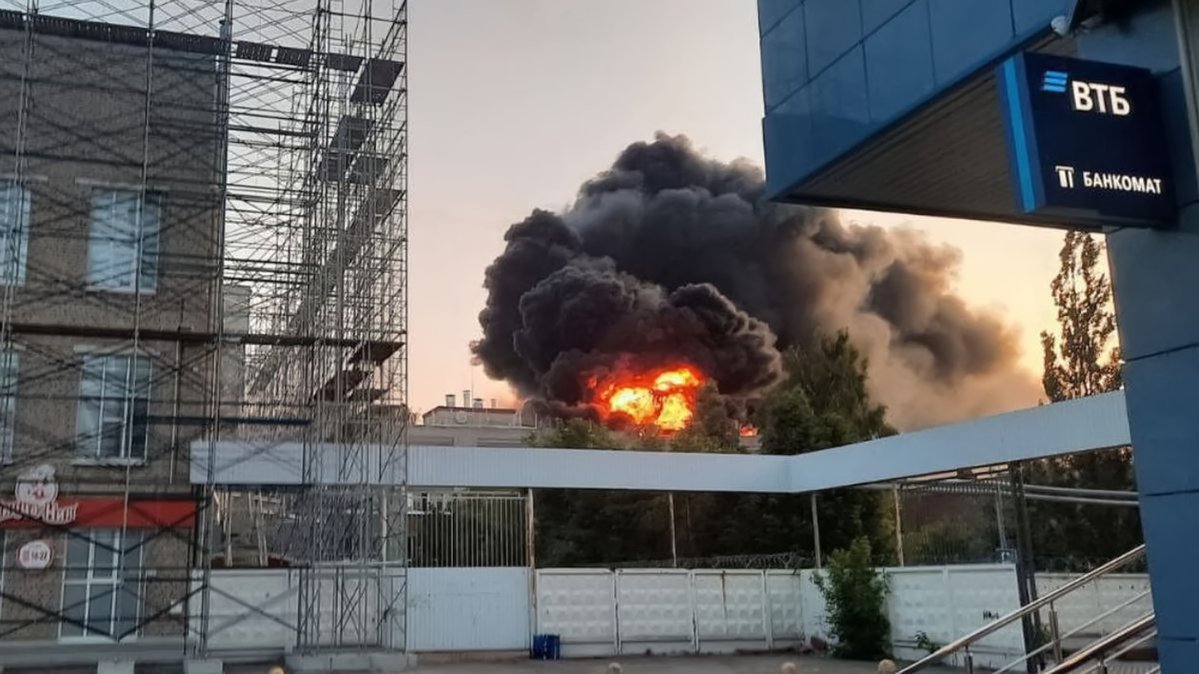1. What would have been unthinkable a few years ago is now routine. Several Ukrainian drones successfully attacked a russian drone factory located in Dubna, only 115 km from the kremlin. This is a smart move by Ukraine, and there may be more to this attack than at first seems. 

2. Importantly, one video showed several drones attacking, one after the other. Oddly, there was remarkably little air defence heard as each drone approached over a lake. What happened to russia’s air defence? 

3. This shows the factory with the lake on the left (west) side. This building is very large. The camera operator (for #1) was quite close and was almost hit by shrapnel. 

4. Clouds of black smoke were observed after the attack. Likely, a lot of material & equipment burned. One question is, how badly damaged is the building and what contents were destroyed? 

5. Post-attack satellite imagery shows at least 9 drones hit the building. The accuracy is impressive with the drones mostly hitting the skylights, which are the roof’s weakest location. How did Ukraine obtain such high accuracy? 

6. A video taken after the attack shows damage to the exterior. This montage shows the windows and siding were blown out. Along with smoke, the damage would be extensive. 

7. Further evidence of extensive damage is where siding has been blown off the building. Visible are roof supports. These same supports are seen in photos from inside the building. 

9. A media event in 2022 showed the inside as large, open areas (presumably where fires could easily spread). There was lots of empty space and likely they were still setting up. Regardless, it is oddly empty. This building also has a strangely high roof. 

10. A curious detail is that although the building has a very high roof, it has very low hanger doors. This will limit the height of the drones that can be assembled here (aircraft tails are often high like shown next). 

11. This building is where russia’s Orion drones are produced. This drone’s high tail may just fit through the doors. The Ombra tool set (OMT101S) is a bit minimalist for this application. These people are not assembling anything (no parts or fasteners). 

12. The Orion drones are well armed and thus quite capable. They have been used in the Black Sea to counter Ukraine’s drone boats and also in Kursk. These drones are likely quite important for russia. 

13. Ukraine has had success shooting these drones down and also destroying them on the ground. This burning Orion carried X-UAV guided missiles intended for use against lightly-armoured vehicles. 

14. Not insignificantly, factory owner, Kronstadt JSC was in serious financial trouble prior to this attack with many lawsuits filed. Recent news reports state that, “the manufacturer of the Kronstadt UAV is preparing for bankruptcy”. This attack may have finished the company. 

15. At least 9 Ukrainian drones flew 500+ km into russia, not far from moscow. This was an important factory but why was there no meaningful air defense? Only small-arms fire can be heard in the videos but that is not effective against FP-1 drones. 

16. Is russia’s air defence depleted? Possibly. A few days after the Dubna attack, 2 Liutyi drones hit an electronics factory in Cheboksary, 1000 km inside russia. One other drone may have been shot down. Otherwise, videos show no evidence of air defence, not even small-arms fire.

17. The reason why the factory in Cheboksary was targeted is very easy to determine. The factory’s front door has a distinctive logo and sign. 

18. This same logo & sign appears on the russian Kometa-M jam-resistant controlled-reception-pattern antennas (CRPA). These are used in glide bombs and various drones including the Shahed. A very important factory - mostly undefended. 

19. It is impossible to for russian media to sugar-coat these daytime attacks. Russian news sources now normalise these long-range drone attacks. There is even handy infographics of what to do when Ukrainian drones attack. 

20. Ukraine appears to have developed its drones to the point where they can successfully attack factories deep in russia. How is the FP-1 (Fire Point) so accurate? There are unconfirmed reports that it has a camera, so perhaps it used automated visual guidance. 

21. So, what is going on? Ukraine seems to be producing high-quality drones in quantity just as russia’s air defences are stretched (or depleted). Consequently, Ukraine can burn russian factories without much resistance. Expect more of these. 

22. How badly this affects russia remains to be seen. If you enjoyed this thread, please repost as a quote. Respectful comments are welcome. Also please read my previous threads listed under “Highlights”. 

23. (ps) The russians openly brag about how good the air defence is around Moscow. It could be that putin has concentrated the remaining working air defence systems around himself.
24. (ps) For completeness, this shows the location of the photos given in #6, #7 and #10 of this thread. 

• • •
Missing some Tweet in this thread? You can try to
force a refresh























